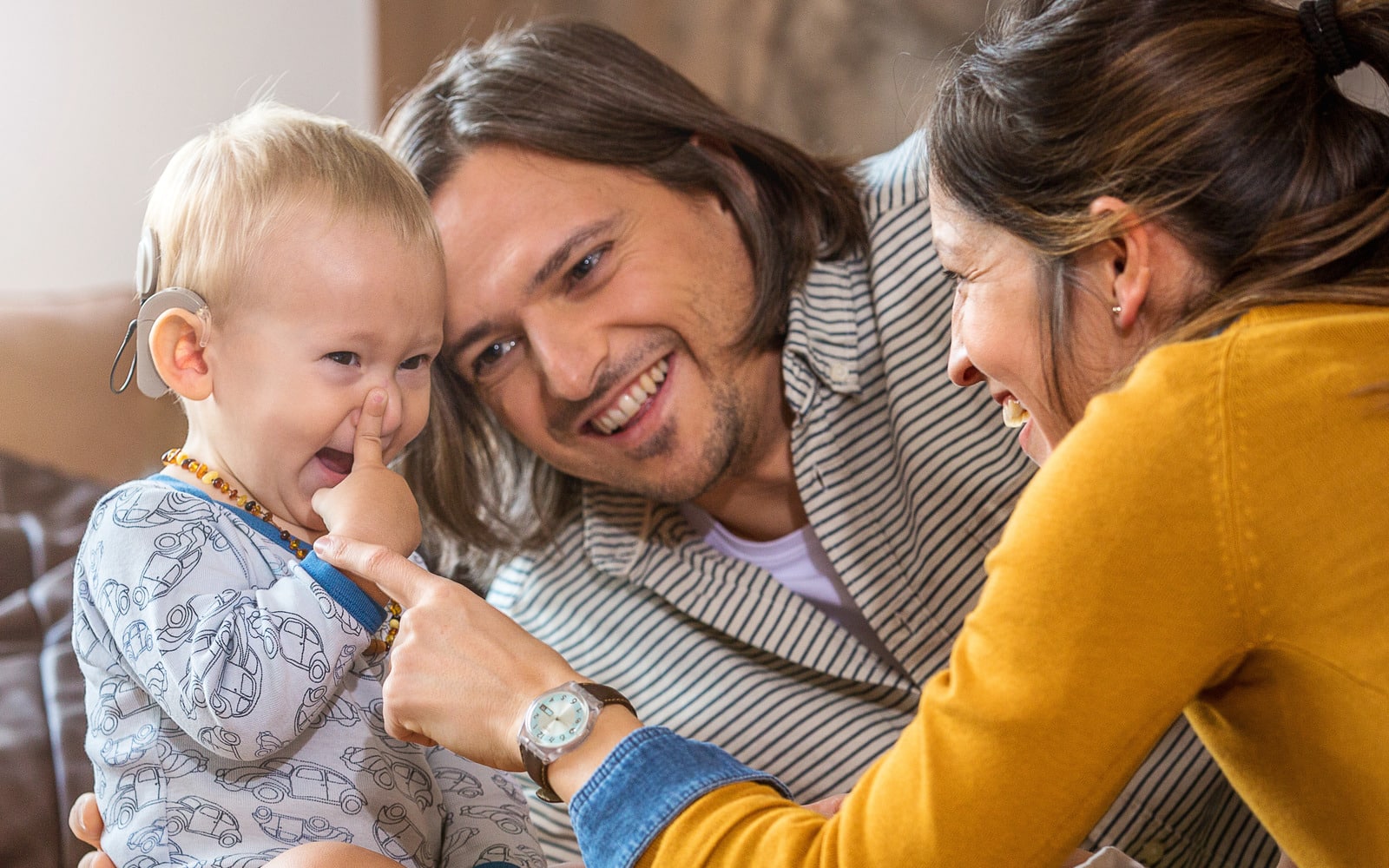Stages of Speech Development for Children With Hearing Implants
When speech language pathologists or rehabilitation specialists talk about “speech skills” or “articulation,” they are referring to the ability to produce speech sounds correctly and clearly as an adult would.

A common speech error is when young children say “wabbit” for “rabbit.” As they have not yet developed the ability to say the “r” sound correctly, they substitute “w” for it instead. Speech development does not refer to the ability to follow directions, use sentences, or answer questions, but purely how a child can say the sounds of speech.
Speech skills are heavily reliant on access to sound. If a child has hearing loss for which sound cannot be adequately amplified with hearing aids or cochlear implants, their speech may be affected.
The development of speech occurs progressively as children grow and spend time listening to and practicing speech sounds. Speech development starts long before children say their first words. Cooing, babbling, and gibberish are all ways children practice their speech skills in the first year.
Children with hearing implants are likely to have had time where they did not have optimal access to sound while they were waiting for hearing implant activation. So their speech skills may not be at the same level as other children their age, especially in the first year following activation. This is because children with hearing implants missed some listening time with good auditory access and now need time listening to the sounds of speech around them with their hearing implants before they can begin to use sounds correctly.
First Steps
Just as babies practice speech by cooing and babbling, children with hearing implants need practice with simple vocalization as a foundation for developing speech skills. In the first months following activation, children with hearing implants can be encouraged to copy:
- long and short vocalizations: “ahhhh” for a plane, “ee ee” for a monkey
- loud and quiet vocalizations: whispering when someone is sleeping, vocalizing loudly to wake them up
- varying pitch in vocalizations: “oo-oo-oo” for a firetruck or police car
- vowel sounds: “uh oh,” “oh no,”’, “meow” for a cat, “moo” for a cow
First Set of Sounds
In English, the first sounds children say in single words are “b,” “n,” “m,” “p,” “h,” “w,” and “d.” Although a child with hearing implants may begin to talk later than their hearing peers, they typically follow the same pattern of development. At this stage, encourage your child to copy sounds for animals and vehicles in fun and meaningful play with these sounds:
- “brmm brmm” for cars and trucks
- “no no” for toys jumping on the bed
- “p, p, p” for boats floating in the water “hi” while greeting
- “weee” while going down the slide
Second Set of Sounds
The next sounds to develop in English are “g,” “k,” “f,” “t,” “ng,” and “y.” If your child is using all the “first sounds” listed above in play sounds and in single words, next they will begin to use the sounds at this level. Continue to encourage your child to copy these sounds in play activities in animal and vehicle sounds:
- such as “grrrr” for the lion
- “quack” for the duck
- “woof woof” for the dog
- “tweet tweet” for the bird
And in single words such as:
- “knock knock” while playing with a doll house
- “go” while playing with cars
- “ding” for a bell
At this stage, it is expected that your child won’t be able to say all the sounds in words correctly—they might say the “f” at the start of “favorite” correctly but not the “v” as this is a sound that develops later. It is also common that children can say short, single words correctly but make more errors when trying to put words together in phrases.
Third Set of Sounds
The next sounds to develop in a child’s speech are “v,” “s,” “z,” “j,” “ch,” “sh,” and “l.” At this stage, encourage and acknowledge your child’s vocalizations. To encourage your child’s development of these sounds, don’t repeat their speech errors, but use acoustic highlighting to emphasize the way the sound is said correctly.
For example, if your child says “I want a big sair (chair),” you can reply by acknowledging what they said but acoustically highlighting or emphasizing the correct production of “ch.” You can say “Oh, you want a big chair! OK, you can sit on a big chair.” In this example, your child gets to hear the correct way to use the “ch” sound in the same word twice while they are engaged and listening.
Fourth Set of Sounds
The most difficult sounds in English are “r,” “th,” and the hard “s” (as in vision). These are the last sounds to develop in children’s speech. In children with typical hearing, these sounds don’t develop until five to seven years of age. For children with hearing implants, it may be later, considering they have missed some listening time while they were waiting for their hearing implants.
For ideas for activities you can do with your child to help their speech development, take a look at our articles for babies, toddlers, and older children.
Thanks for your message. We will reply as soon as possible.
Send us a message
Field is required
John Doe
Field is required
name@mail.com
Field is required
What do you think?
© MED-EL Medical Electronics. All rights reserved. The content on this website is for general informational purposes only and should not be taken as medical advice. Contact your doctor or hearing specialist to learn what type of hearing solution suits your specific needs. Not all products, features, or indications are approved in all countries.



